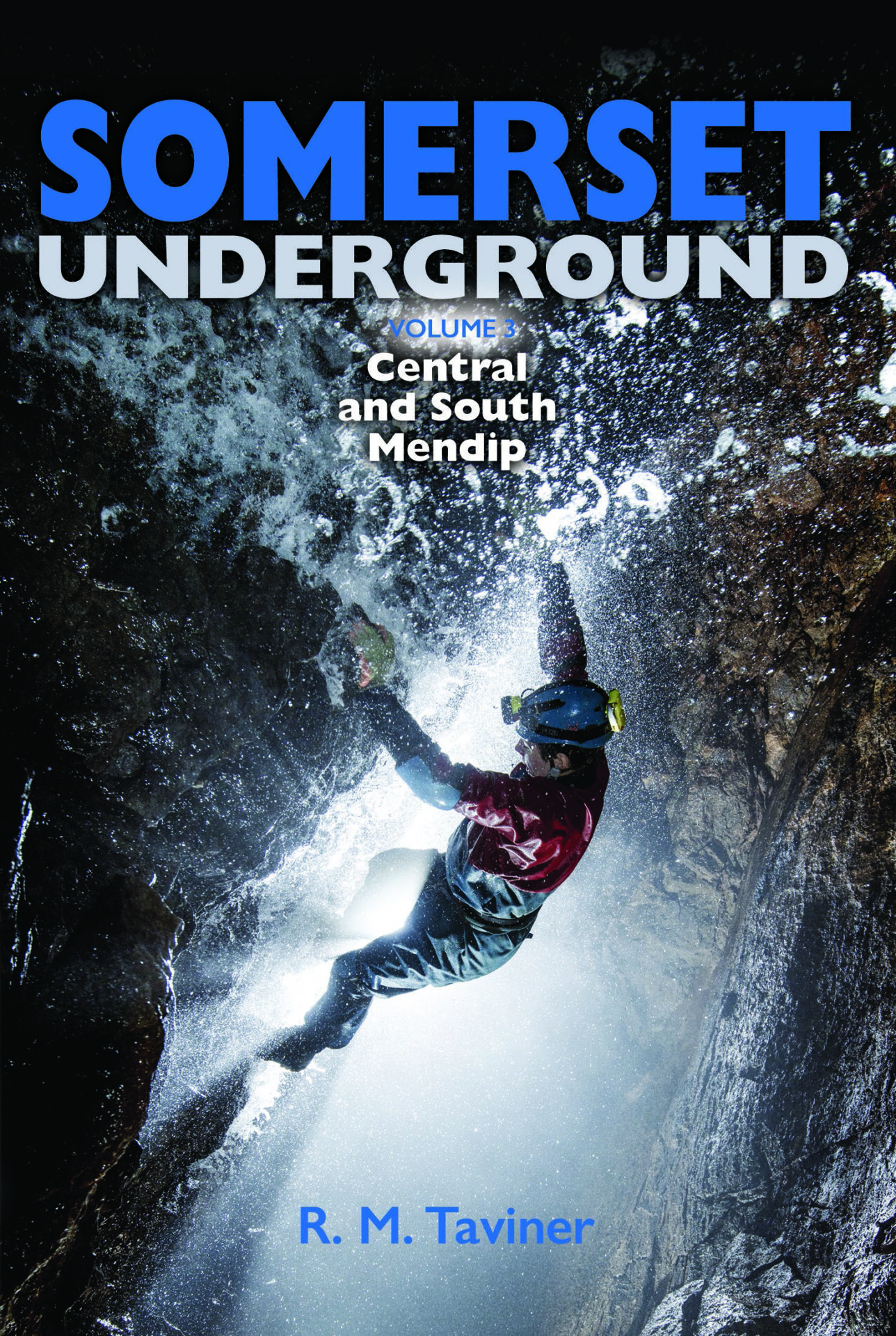
This is the third volume of a four volume set covering the caves, mines and associated features of the county of Somerset. Volume 1 was published in 2020 and features Bristol, Broadfield Down, the Bristol Channel and West Somerset. Volume 2, also published in 2020, features sites in West Mendip, Burrington and North Mendip.
Volume 4 will complete the survey by describing caves and mines in East Mendip, Bath, and South Somerset.
Each volume in this series has a hardy plastic dust cover as the book is designed for regular and frequent use in the field. The compact format lends itself to the same purpose, easily fitting into a coat pocket. Mendip cavers old enough to remember the earlier editions of Mendip Underground will be familiar with the size.
Even more mature Mendip cavers may also be aware of Mendip – The Complete Caves and a View of the Hills, by Barrington and Stanton, with the same format and last published in 1977. It is to that volume that we need to look for something equivalent to this new book. As if to remind us of this, there is an appropriate dedication of volume 3 to the memory of Nick Barrington and Willie Stanton.
Continuing the approach of the first two volumes of Somerset Underground, the third volume comprehensively catalogues many minor sites that can still be visited and many that cannot due to blockage or development, as well as the many extensive and deep caves that are to be found in the area. This is important for cavers both recent and future, in that it preserves information about those more minor sites in one place that might otherwise require further research from diverse information sources. The online Mendip Registry and Archive is a fascinating place to seek such information, but as I discovered when browsing these volumes, reading a book with well-collated information is actually far simpler and faster. Should I want more information on a particular site, I know that my next port of call would be the website. And unless you have a good smartphone and nifty fingers, a website is nothing like as convenient as a book in your pocket when out walking the hills.
There is a short introductory section covering the history of cave exploration in the area, geology and geomorphology, archaeology and palaeontology, site access, and water as a local resource that must be protected. There are also sections covering the history of cave exploration and local clubs, and on the story of mining in this area, for lead, ochre and calamine. Finally, there is a reminder that the work of cataloguing caves and underground spaces is never complete, and any volume, no matter how detailed, must be selective in what is included and what is left out.
The main part of the book is divided into the three regions Cheddar Catchment, South Mendip, and Wookey Hole Catchment. Each of these regions are further subdivided by localities where caves, mines and tunnels can be found. The sites themselves are listed geographically, and it is essential to refer to the book index in order to find the description of any particular cave you are interested in. Most, if not all, sites are identified on a number of maps throughout the book, which is a very useful tool for seeing the sites in their local context.
Each site is listed with its name, location by grid reference (where known), length, vertical range and altitude, and categorisation as a cave, mine, spring and so on. A number of recorded sites that are now ‘lost’ are also included, as well as a number of formerly ‘lost’ sites which have more recently been found again. The site descriptions are usually fairly brief, which is only to be expected in a book covering so many caves and mines. Where further details can be found elsewhere, the site description concludes with a reference or two to where this information may be located.
For me, a very useful feature of this book is the inclusion of historical information, such as stories of discovery, exploration by miners, subsequent uses and adaptions of the sites, and the involvement of cavers more recently in researching and rediscovering many caves in the region. This is an exploration dimension often overlooked by regional caving guidebooks.
The book is well illustrated with a number of good-quality colour photographs and maps. The book concludes with six appendices: information about MCRA, guidelines on cave conservation, safety advice when visiting caves, cave rescue, caving organisations and a list of references for further reading.
These volumes are a very welcome return to the concept of a compact regional cave guidebook. Copies may be purchased from the Mendip Cave Registry and Archive.
Reviewed by Peter Burgess
Somerset Underground Volume 3: Central and South Mendip
RM Taviner
Published: Mendip Cave Registry and Archive (2022)
ISBN 978-1-913271-03-9
266pp
